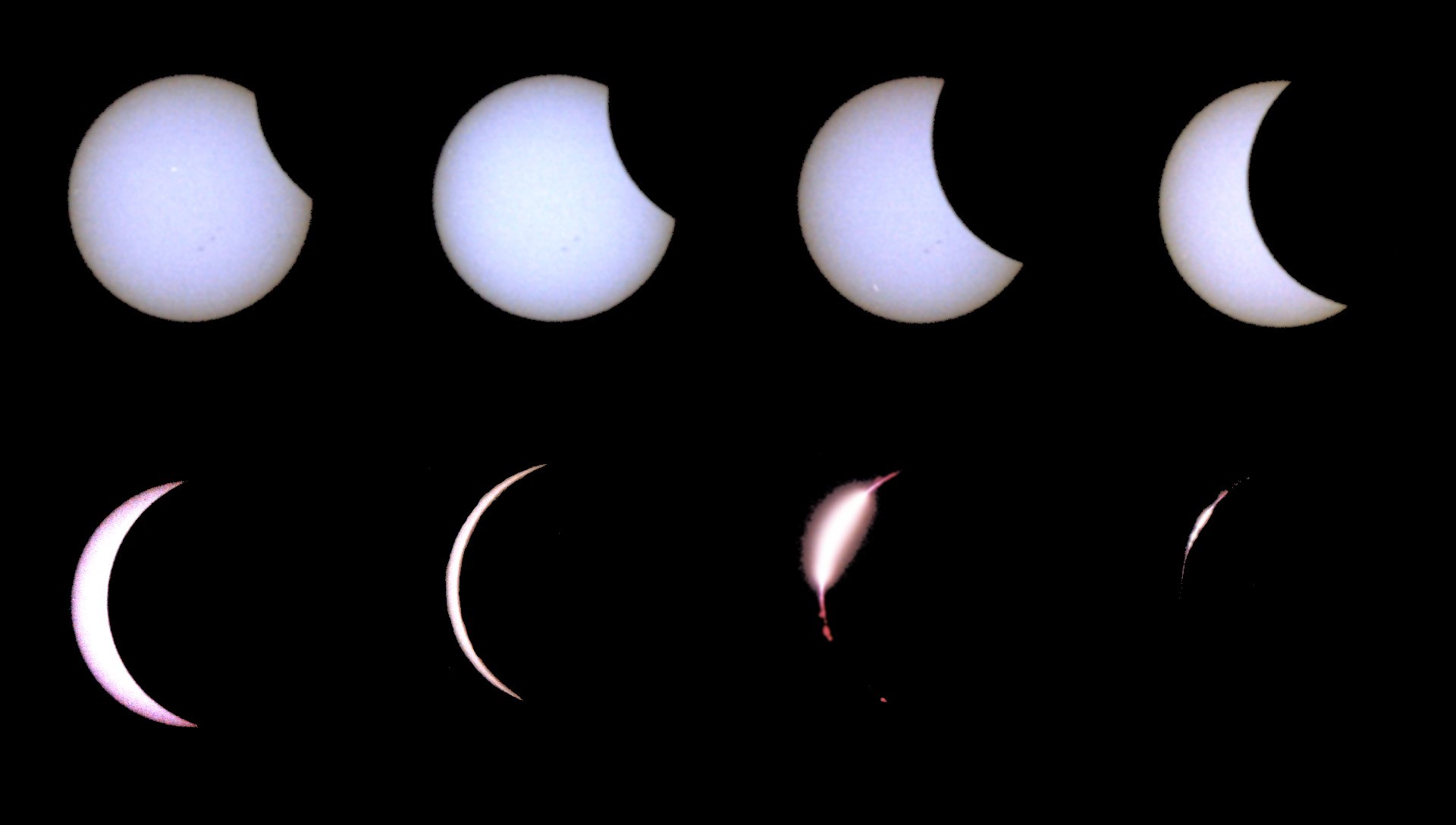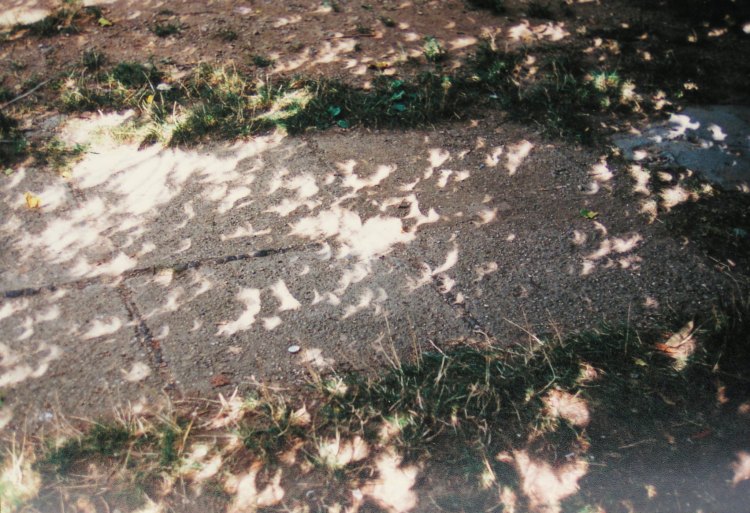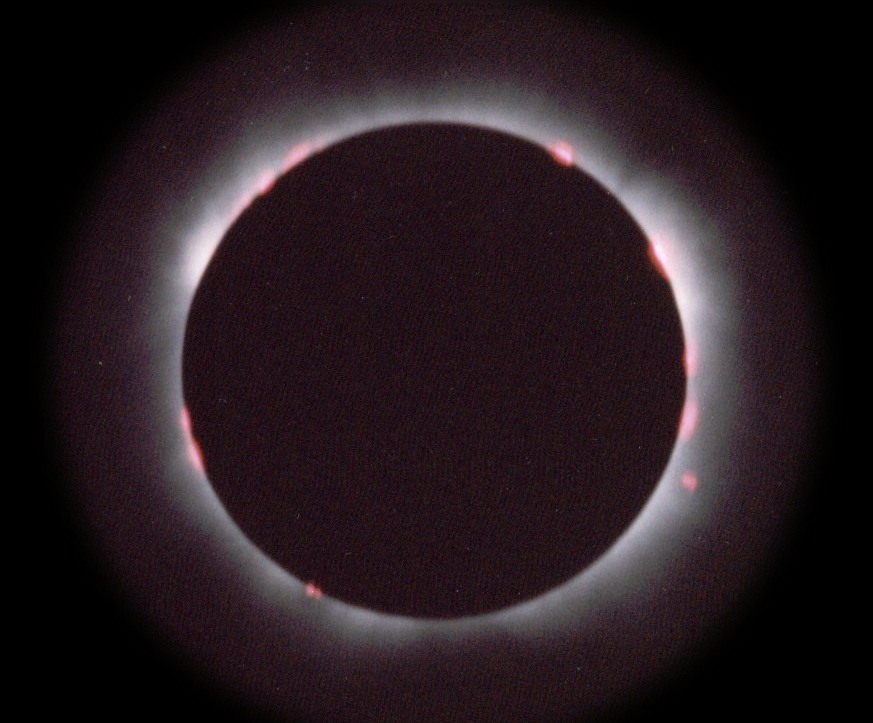
|
Tall reeds rustle by the lakeside, little birds call as they fly from tree to tree and a woodpecker taps on a nearby trunk. Slowly the breeze increases and as it does so, the first leaves of autumn drift down onto the hard earth floor. A beetle with brilliant scarlet wings scurries past, followed by a minute ant, then another and another...... and above them a dragonfly hovers, its slender azure body shimmering in the sunlight. Quite suddenly the shadows become intense. The outline of my hand, showing every hair on my fingers, moves across the page as I write. Above, a rook caws long and anxiously. I look up. Half of the sun has now been eaten away. It is noticeably cooler and the forest floor is covered with hundreds of little crescent suns, jangling against each other like decorations on a Christmas tree. The darkness now increases rapidly; everything seems to be wrapped in velvet. The sky is pink, then black, and all that is visible of the sun is a brilliant halo of light streaming out from behind the great black ball of the moon. Suddenly there is a hush, as if the earth were holding its breath..... Then the reeds begin to rustle, a nuthatch flies across the glade, calling as it goes, in the distance cocks crow and rays of sunlight slant once more between the trees. The brief moment of magic has passed. JAB |
The following photographs of the 1999 Total Eclipse of the Sun were taken near Snagov, about 25km north of the Romanian capital, Bucharest. All photos of the sun itself were taken using a 1000mm lens at f16 and a wet finger guide for the exposure time. The partial phases were taken though a photographic quality version of the filter used in those solar glasses that were ubiquitous in 1999. This attenuated the light transmission by one in 100000 and caused the bluish cast. Note the faint sunspots in the first three frames:

As the sun became more eclipsed, the general light level became darker, rather like viewing a sunny day through a half-silvered office window. The shadows got sharper as what was left of the sun's photosphere became more like a point source. Note the 'Diamond Ring' effect in the second picture from the bottom right.
Another interesting feature of a solar eclipse
is that, either side of totality, little crescent suns can be seen as light
filters through trees. This is caused by the small gaps between leaves
forming pin-hole cameras.
I took two photos of this effect - one is the background to Jocelyn Bailey's prose, which introduces this page. The other is shown below:

The thin steel-blue remainder of sunlight rapidly changed to a twilight similar to just after sunset in a little over a second as the moon finally covered the sun. It was just like the houselights dimming for the greatest show on earth.

Note the red prominences, particularly the one at 4 o'clock that is well clear of the eclipsed sun. This was 33000 miles across - more than four times the diameter of the Earth! It was a bit hazy at the time, and although it was quite dark, the only star or planet plainly visible was Venus (out of the field of view above).
There's no such thing as a 'correct exposure' when photographing an eclipse, owing to the huge dynamic range of light. Unfortunately, I didn't play around enough with exposure settings to get a good shot of the corona, which is much dimmer. However, the following, taken by someone else in our party using a 500mm lens, shows what the corona was like. You wouldn't think these two photos could have been of the same eclipse!